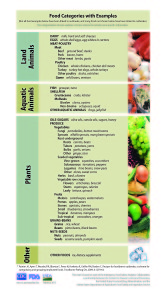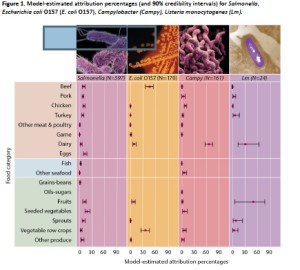I’ve been binge watching Mr. Robot.
It’s too intense to blog.
 But now that American-style football is back, I have background to which I can blog.
But now that American-style football is back, I have background to which I can blog.
As the opening game extravaganza began at 10:30 a.m. Brisbane time, and with Sorenne safely at school (we had a parent-teacher interview, the kid is great, if not conventional) I emailed Ben and Amy and said, Americans really know how to do a spectacle. But from a risk management perspective, I’m concerned about the horse.
They are the Denver Broncos, so of course there was a horse.
Amy said she’d never heard this story.
So, from Michael Sommermeyer of Texas Tech University, his 1994 crisis communications regarding a horse at football games (there weren’t blogs back then, and Harrison Ford didn’t have an earring).
According to legend, the first Texas Tech Masked Rider, wearing a scarlet satin cape, rode out onto a football field during half-time of a game in 1937. The rider circled the field on a “borrowed” Palomino stallion, then rode off into the night to return the horse before it was discovered missing. In truth it was the Saddle Tramps, an university spirit fraternity, who first sent this rider around the field wearing a satin cape crafted by the home economics department on a horse named Silver.
The Masked Rider tradition didn’t take hold, however, until Texas Tech’s first Gator Bowl appearance in 1954. This time a black horse was mounted by the first official Masked Rider, Joe Kirk Fulton, an agriculture student. After the game, _Atlanta Journal_ sports writer Ed Danforth wrote, “No team in any bowl game ever made a more sensational entrance.” Since that game, the tradition of the horse circling the field has grown into nationwide prominence. Few in the stands forget a jet-black quarter horse galloping at full speed; with the Masked Rider masterly holding on — thumbs and forefingers forming the Red Raider “guns up” — as the cape flaps in the breeze. Eleven Mascots have served as the Masked Rider’s steed, including a horse purchased two years ago named Double T.
On September 3, 1994, Texas Tech opened its football season with a game against New Mexico State. This also happened to be the game selected to celebrate the 40-year tradition of the Masked Rider program. Sixteen former riders were at the game to celebrate. During each game, the Masked Rider leads the team onto the field and, after every score, takes a victory gallop down the west sideline. After a score in the third period, the Masked Rider and horse began a victory gallop. During this gallop the saddle slipped, throwing the rider off the horse. The horse reacted and began running loose on the field. As the horse reached its “home” tunnel, it slipped, fell headfirst into a concrete wall and crushed its skull. The horse died immediately.
The Masked Rider’s handlers, members of the Saddle Tramps and the university veterinarian rushed to the scene. They began trying to help the horse and make preparations to remove the mascot from the stadium. Before the accident a plan was initiated in the event the horse died. This plan provided for an immediate response from the university veterinarian, provided for a horse trailer at the stadium, and indicated to cover the horse with a tarp. Other policies and procedures also are outlined in the plan, however these points were essential to an immediate response. The tarp proved an essential part of the plan because many children were sitting in the area where the horse died, and they all were upset. The tarp helped to distance these children from the death. The Masked Rider, Amy Smart, was taken to the hospital with a sprained wrist and bruises. She was later released and met with Masked Rider committee members. Texas Tech has two main public relations offices: the Office of News and Publications and the Sports Information Office. Also, the Masked Rider program often handles its own publicity. Immediately, all media requests, public comment and questions were directed to the Office of News and Publications. This controlled who would provide information to the public. The Office of News and Publications has a plan for emergencies, however, that plan usually refers to planes crashing into dorm buildings or tornadoes ripping up the campus. So the plan is very detailed. However, in this case, parts of the plan did provide the staff with a way to respond quickly. Following the plan, the appropriate members of the Office of News and Publications staff, the director, News Bureau manager and the representative to the Masked Rider program, were contacted via a phone tree to discuss the accident, provide information and outline an initial plan of action. This group agreed to talk again in a few hours to outline an “After the Accident” plan. Once the basic information had been gathered, the staff provided a statement to the media regarding the injuries sustained by the Masked Rider and the death of the mascot. An emergency meeting of the Masked Rider program committee was called to discuss what to do with the horse. A representative of the Office of News and Publications attended this meeting. At one point in the meeting it was suggested the horse should be taken to a horse rendering plant. The public relations representative outlined the negative publicity that might generate, and the committee agreed to bury the horse at the Texas Tech farm. Various media stories were presented during the weekend, with quoted comments coming from the Office of News and Publications spokesperson.

MR. ROBOT — Season:2 — Pictured: Rami Malek as Eliot Alderson — (Photo by: Nadav Kander/USA Network)
The Masked Rider committee agreed to meet again, after the Labor Day holiday. This delay gave the media a few days to speculate on whether the program might be scrapped. In meetings with the media, the Office of News and Publications spokesperson said the program wouldn’t be terminated, but indicated it was up to the committee to make a final decision. Because the media was speculating the death of Double T would mean the end of the program, a plan was created to handle the alumni’s fear that the Masked Rider program would be eliminated. Campus operators, University Center spokespeople, Sports Information spokespeople and the Ex-Students Office were directed to transfer all phone calls from the public to the Office of News and Publications. The staff took more than 200 phone calls from the alumni and the public regarding the program and the horse. Staff members wrote down all comments and kept a record of people offering a new horse. All comments were then recorded in a computer database. This procedure helped to control the public response from the university and provided an internal tally of program supporters and potential donors. The Office of News and Publications contacted the development office and created a Double T Memorial Fund through the Texas Tech University Foundation. This fund would be used to pay for a marker at the burial site. All callers were told by staff how to donate money to the memorial fund. The staff also prepared a plan for a memorial service to be presented to the Masked Rider Committee. The goal was to present a plan that would put the best possible face on the situation. Also, since the committee tends to be disorganized, it was necessary to present a plan that would be accepted quickly.
Staff members involved in the crisis agreed a memorial service should be held during the next football game scheduled for Thursday (Sept. 8). This game happened to be televised on ESPN, which provided an opportunity to show school spirit to a national audience. The Office of News and Publications staff wanted to control the public relations effort and come to the Masked Rider committee with a plan already in place, in an effort to eliminate any doubt which office would communicate for the university. The staff agreed the memorial service should honor more than just a fallen mascot. It should honor a tradition. It seemed probable the Masked Rider committee would vote to keep the Masked Rider program, so the staff began working on a memorial plan that would provide closure, show school spirit and be in good taste. During the Masked Rider committee meeting, The Office of News and Publications staff presented the memorial service plan to the committee and presented justification for each point in the plan. The memorial plan centered around the observation of a moment of silence on the field before the game. Additionally, a memorial wreath would be placed on the spot where the horse would have normally stood during the game. Plus, The Goin’ Band from Raiderland would dedicate the school song to Double T and the Masked Rider would place the horse’s reins on the wreath. This plan offered the university a way to show school spirit. It presented the children who witnessed the death of Double T a chance at closure. And, the plan allowed the university to indicate the program would continue, if the committee decided the program would go on. During the Masked Rider committee meeting, it also was suggested that the audience be asked to give a “Guns Up Salute” to the tradition. The Office of News and Publications staff agreed this was a way to involve the audience. After listening to the presentation the committee agreed the plan was the best way to honor the tradition, and because it was already outlined, the committee was allowed to make other decisions. At the Masked Rider committee meeting, all members of the local media, television and print, attended. Two television stations reported live from the university as the meeting commenced. The committee agreed to continue the Masked Rider tradition, made plans to search for a new horse, decided to reexamine safety procedures and determined how to handle incoming donations. The Office of News and Publications staff wrote a script for the memorial service describing the proud tradition of the Masked Rider, made a point to say the tradition would continue and directed the crowd where to send donations.
The Office of News and Publications met with the media, including the producers and commentators of ESPN, and emphasized that “traditions make great universities.” The staff reemphasized the Masked Rider program would continue. Staff members also talked up the memorial service and encouraged the community to participate. Staff members did not bring up the question of safety of the program unless asked. Only one reporter followed this angle. Overall, the response to keep the program was overwhelming. The Office of News and Publications received more than 200 calls from alumni stating the program should remain. More than 25 calls came in offering donations for horses and more than 50 calls offered money or other support. The Masked Rider program will recover and should be able to add to an endowment which funds the program. A memorial area will be built where the horse is buried at the Texas Tech farm, honoring this fallen mascot and the program. The program was featured on national television during our matchup with the University of Nebraska and later during ESPN’s SportsCenter. The university was able to show a strong sense of tradition. This is important because Texas Tech joins Nebraska in the Big 12 Conference next year.
The Masked Rider committee had a plan for dealing with an accident in place. This plan was relied upon during the death of Double T. The Office of News and Publications became the official office for information. There was one spokesperson who spoke with the press. This eliminated speculation, controlled the release of information and forced the media to seek out our office for comment. All calls from alumni and the public were funneled to this office. All offices on campuses receiving calls, faxes or letters were directed to send them to the Office of News and Publications. This action allowed the Office of News and Publications to control the internal relations of the university and present one story to the public. The staff immediately began creating a protocol for the memorial service to be held during the pre-game ceremonies of our matchup with Nebraska. The staff’s expertise allowed the office to outline a memorial service and then present the plan to the Masked Rider committee. The staff then made all arrangements for making this plan work. This action allowed the Office of News and Publications to detail a plan with the most impact, while limiting in-fighting among Masked Rider committee members.
Things to consider:
** Create an office emergency plan to be in place in advance. This should include a telephone tree or a way to contact staff members quickly. This plan should include a place for the staff to gather, especially if the emergency involves loss of life or buildings.
** Be willing to take charge and become the spokesperson for the organization. In a large organization, it is important to control the flow of information, emphasize the positive points, have answers for the negative points and be ready to serve as a resource.
** Quickly develop, or re-tool, a plan of action for putting a positive spin on a bad situation. It is important to control the media and shape the public relations actions of any committee involved in the disaster. Public relations often involves shaping internal as well as external perceptions. As the public relations expert, it is critical to show the way.
** Keep a log of positive and negative calls coming in to the organization. This log should include names and phone numbers. It helps to have this log latter when you need to followup with alumni or donors. This log also shows the public relations office is doing its job.
** When planning a memorial for a horse, don’t consider lowering the flags to half-staff. That tribute is reserved for public officials and other people, not animals. (Calls will come in demanding to know why the flags are not at half-staff!)
** As a public relations professional, follow your instincts. They are usually right.
Accidents are unavoidable, however pre-planning can eliminate the fears and questions that follow an accident. Perhaps everything the Office of News and Publications did in responding to this accident did not follow the best path, however in this situation it seemed to work. Answer the media’s questions quickly and honestly and look for a way to put the best light on the situation. In this case, the staff built support for the program, found new donors and gave our alumni and supporters of the Masked Rider a chance at closure following the death of Double T. And in the end, the comments like, “You did a great job,” or “You really know what you’re doing,” show the plan worked.













.jpg) examined 55 people, including 18 individuals who were sick and 37 people who were not sick.
examined 55 people, including 18 individuals who were sick and 37 people who were not sick.(1)(1)(1).jpg)